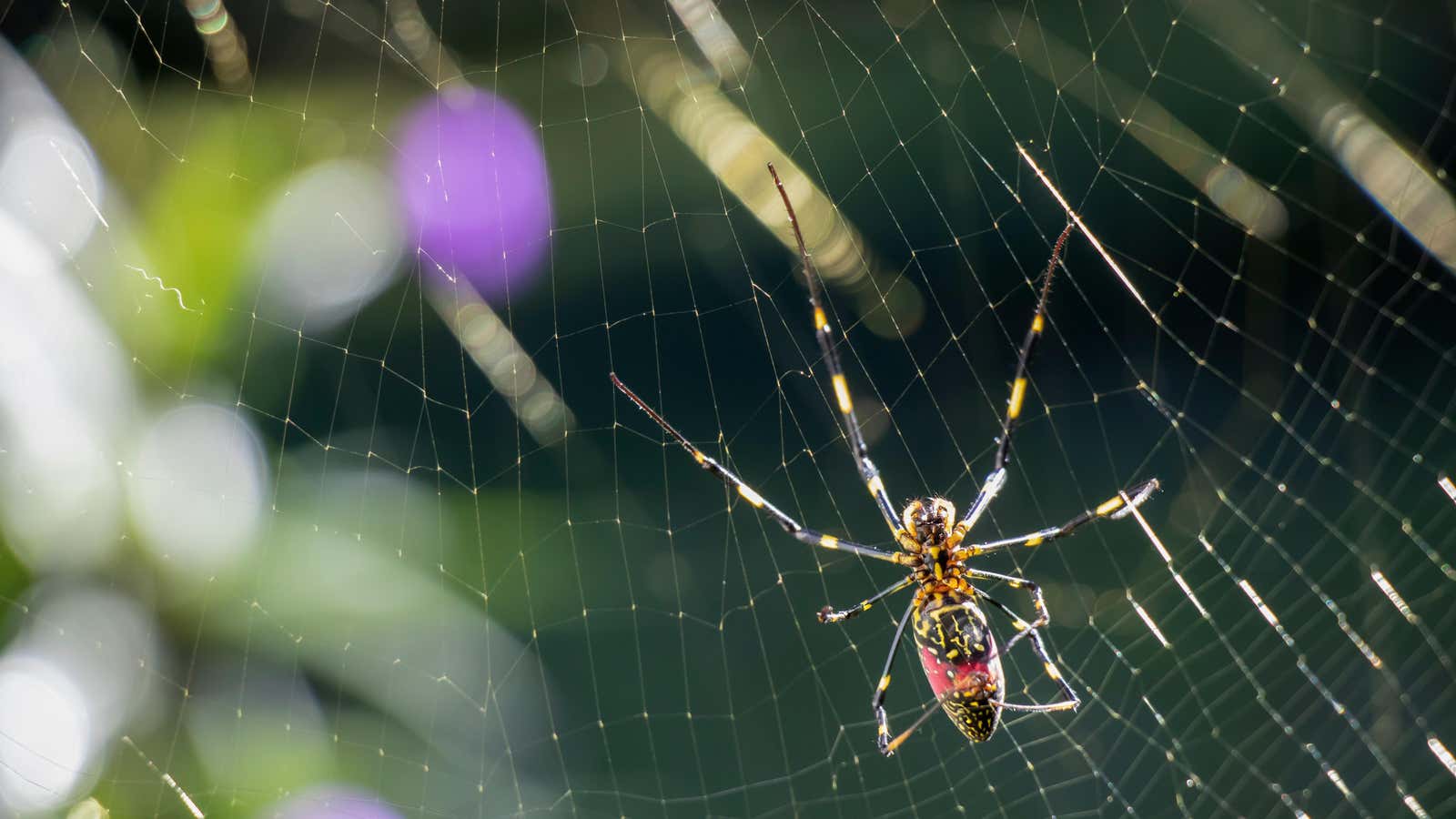Don’t Worry About the Giant Spiders That Will Fall From the Sky This Summer

Reading the headlines of recent days, one might think that the entire East Coast is about to become the setting for a horror movie. “Giant” spiders “the size of a child’s hand” or “the size of an adult’s hand” are expected to “colonize the entire East Coast”. They will use “tiny terrifying parachutes” to “jump out of the sky”. Oh, and they are poisonous.
Come on, scream. Swear never to go out again. Come back when you’re ready and we’ll talk about what these spiders really are – they’re called joro spiders, by the way.
Are joro spiders poisonous?
Yes, but not poisonous enough to hurt you.
Here’s the thing: all spiders are poisonous. What we call poison is their way of digesting food. Remember that spiders eat bugs and creatures smaller than themselves, and venom is what they use to liquefy and swallow the insides of their prey. It’s pretty metal, but on a small scale. If you are larger than a housefly, you have nothing to worry about.
Some spiders produce enough venom that their bites are painful (or, in rare cases, fatal) to humans. But Joro is not one of them. Its fangs are usually not even large enough to penetrate human skin. You will be fine.
Are jorō spiders really the size of your palm?
No. Some of these recent reports have gotten a little carried away. All jorō spiders have legs, and if you include the extended legs in your measurements, adults are about three inches wide.
In reports, the spider is compared to the size of a child’s hand or the palm of an adult. Like, well, but hardly. These spiders are larger than the ones you’re probably used to if you live in the northeast, but they’re not the size of a tarantula or anything like that. Here is a photo of a joro spider on a human arm . It is about twice the size of its close relative the golden silk spider, also called the banana spider, which is already found in the southeastern United States.
Will jorō spiders rain down from the sky?
This is another exaggeration. The truth is that these guys, like many other spiders, can travel in a hot air balloon. This means that they release several strands of silk into the air and let the wind pick them up (this phenomenon was illustrated in the “enchanting” ending of Charlotte’s Web ). They can sail for miles if they catch the right wind, which has led to speculation that some of them could make it to DC this year.
We don’t really know how far they’ll be able to travel, and there’s no reason to believe they’ll fall from the sky all over the East Coast. The recent hype was sparked by a study by scientists at the University of Georgia, where they calculated that the joro spider must be able to withstand low temperatures.
Joro spiders, originally from Japan, have been living in Georgia since 2013. Now that we know they can survive in cold temperatures, it’s wise to start looking for them in colder areas – hence the warnings that they might make their way to the northeast. But they are not planning a mass migration.
Is killing joro spiders worth it?
Not really! Some invasive species may create problems in a new environment. Lantern flies, for example, have “crush at sight” status where I live in Pennsylvania .
But joro spiders are not expected to cause significant damage or destruction. They are just spiders and they just want to eat bugs. In fact, they can be beneficial as they can eat mosquitoes, stink bugs, and other insects that are a problem in their own right. One of the authors of the new study told the press that “people should try to learn to live with them” and that there is no need to kill a spider that is just trying to live its little spider life. I, for one, greet our new stinkbug-eating overlords.